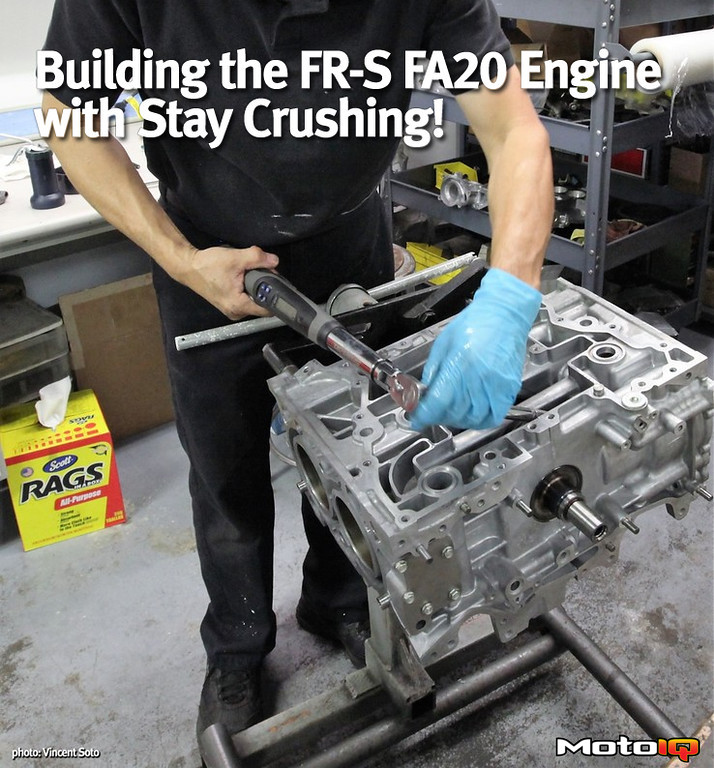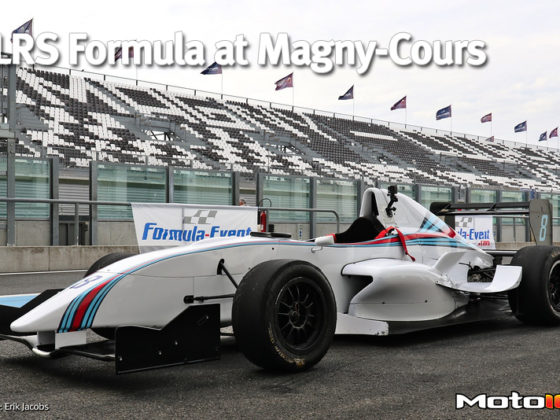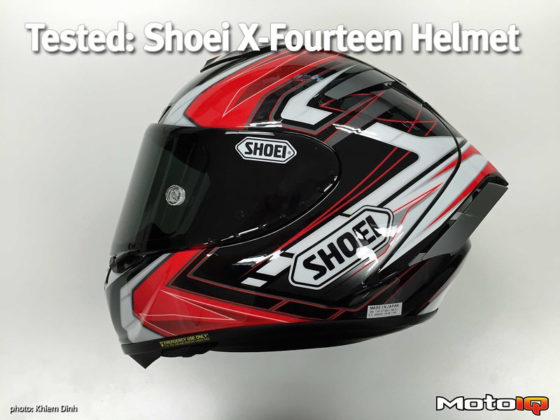
Building the FR-S FA20 engine with Stay Crushing!
Our friend Robert Kochis doesn't seem like a typical MotoIQ reader. He is a cool guy, not a nerd. He vapes and has sleeve tats. He is into show cars, not racing. He is even insta famous as Stay Crushing.
His daily is a stanced out 350Z that is slammed to the ground with airbags. The poor Z has a ton of negative camber and a stretched wheel fitment to go along with the ground scraping ride height. His other car is a show FR-S with a Rocket Bunny type 2 aero kit.
Robert also hangs around the MotoIQ office for some reason lending out some of his cool to us. However, this often precludes us from getting any work done so we told him if he wants to hang out for free, he would have to convert his show FR-S to a track car.
Actually, we think Robert's car is pretty cool and nicely done. We are just giving him some help to make his car faster and more reliable at track days and will give him some help later when he starts competing in time attack events.
One of the things that was lacking on Robert's car was the engine department. While the car had a base Vortech supercharger kit with a V-3 H67B blower and a 9 psi tune, everything else in the engine compartment was stock. However, after a few track days, the car was beginning to lose power so we had to take a look inside. Running the 12.5:1 compression FA20 on the track with 9 psi and pump gas is pretty much pushing it and Robert's engine was starting to push back.
With power dropping, it was time to get inside the engine and while we were in there, we decided to do some work to make it a bulletproof number suitable for long track session with forced induction. With a strengthened bottom end, Robert will be switching to a bigger V2 supercharger and driving that blower harder with a bigger pulley to make more boost as well. Robert will up the boost from 9 psi to 14 which the new engine should easily be able to handle.
With a stronger bottom end and a more boost appropriate compression ratio, we hope to be able to have tuning that puts the engine closer to its happy space as well. Check out the sort of stuff we have in mind below!
 For pistons, we went to our favorite piston for moderate power and boost levels, JE with their FSR slipper skirt forged strut type piston. We love this piston for high revving NA use and applications with moderate boost and power.
For pistons, we went to our favorite piston for moderate power and boost levels, JE with their FSR slipper skirt forged strut type piston. We love this piston for high revving NA use and applications with moderate boost and power. The JE FR-S piston is made out of tough 2618 low silicon alloy which is ductile and can withstand detonation and high cylinder pressures well. The 2618 alloy expands more than higher silicon alloy and hypereutectic pistons and requires greater piston to wall clearance but JE has some good skirt profiles that reduce noise. This is important for modern engines with knock sensors.
 The semi-direct injection FA20 engine (it has both port and direct cylinder injectors) uses a very high 12.5:1 compression ratio. Since direct injection offers a lot of charge cooling and the cooling can improve volumetric efficiency, this is a good thing. It also allows the use of this high compression ratio with crappy California 91 octane fuel.
The semi-direct injection FA20 engine (it has both port and direct cylinder injectors) uses a very high 12.5:1 compression ratio. Since direct injection offers a lot of charge cooling and the cooling can improve volumetric efficiency, this is a good thing. It also allows the use of this high compression ratio with crappy California 91 octane fuel. Any way you slice it 12.5:1 isn't going to cut it with forced induction for very long, direct injection or not. To run this sort of compression with poor fuel the timing will have to be reduced considerably which has the cascading effect of increasing heat. None of this is very good for the engine's internals.
We will be reducing the compression to a more FI friendly 10.5:1 which matches the FA20B engine found in turbo Subarus as well as Turbo and direct injected VWs. This will allow Robert to spin his blower faster for more boost and run more timing in his ignition map which will help things run cooler and have a positive impact on power besides.
The high compression and the direct injection are the reasons for the pistons unusual looking dome. The odd shape dish you see is the pre-combustion chamber where the direct injector can create a stratified charge, putting a richer and easier to ignite mixture near the spark plug. The deep dish of the pre-chamber means that the piston has to have a higher than normal dome to create the moderately high 10.5:1 compression ratio.
 The feature we like best of the FSR piston is its reduced skirt design. The FSR is a strut type piston meaning that it has very reduced skirts that are cut away to just small contact patches on the major and minor thrust surfaces as opposed to a full skirted piston that has a skirt that contacts the cylinder wall for 360 degrees.
The feature we like best of the FSR piston is its reduced skirt design. The FSR is a strut type piston meaning that it has very reduced skirts that are cut away to just small contact patches on the major and minor thrust surfaces as opposed to a full skirted piston that has a skirt that contacts the cylinder wall for 360 degrees. A strut-type piston has the advantage of being lighter with less friction due to small contact areas. In the past, strut pistons were also known to be more of a short duration of use, race type piston that wore quickly and was noisy on an everyday driver, also due to their limited contact area.
In the FSR piston, the major thrust side that sees most of the load has a cam shaped profile to reduce noise while the much more lightly loaded minor thrust side of the piston has a different skirt profile for lower friction.
The asymmetrical skirt profile gives the FSR piston longer life, less friction, and less noise. The differential major and minor profiles make these pistons exceptionally quiet for a 2618 alloy reduced skirt piston.



